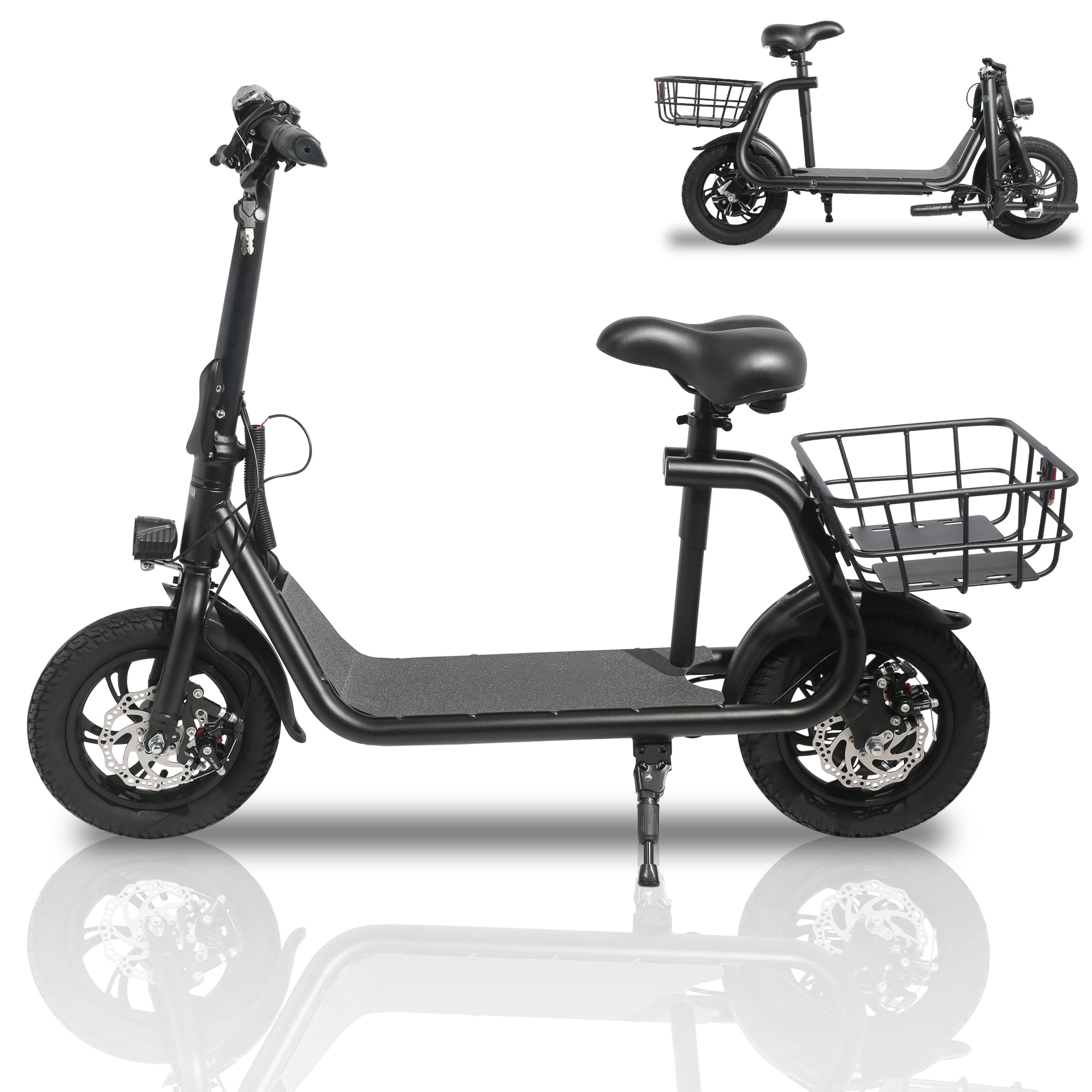Choosing the right drivetrain for your hybrid bike can greatly enhance your ride. If you prefer low maintenance and smooth city commutes, consider an internal gear hub. For varied terrains, a 2x or 3x drivetrain will give you the gear range needed for comfort on hills. A 1x drivetrain simplifies shifting and is perfect for casual riders on flat roads. Each option has its pros and cons, depending on your riding style and where you'll be biking. Stick around to discover more about how your specific needs can guide the best drivetrain choice for you.
Key Takeaways
- Consider terrain: Choose a 1x drivetrain for flat roads and a 3x drivetrain for hilly areas to optimize climbing and speed.
- Maintenance needs: Internal hubs require less upkeep, while derailleur systems offer more gear options but need regular adjustments and care.
- Gear range: Multi-speed setups provide adaptability for varied terrains, with options ranging from single-speed to 27+ gears based on riding style.
- Weight and handling: Lighter derailleur systems enhance maneuverability, while internal hubs provide stability due to their centralized weight distribution.
- Emotional benefits: Prioritizing maintenance preferences aligns with riding habits, leading to a more enjoyable and stress-free cycling experience.
Understanding Drivetrain Components
Understanding drivetrain components is essential for optimizing your riding experience on a hybrid bike. The right components can make a considerable difference in your bike's speed and efficiency.
Hybrid bikes typically use Shimano or SRAM parts, blending road components focused on higher speeds with MTB components designed for rugged terrain and traction. Incorporating performance tuning can enhance the overall experience, similar to how tuning improves the efficiency and power output of vehicles.
When considering gearing options, you'll find configurations ranging from single-speed setups ideal for flat surfaces to multi-speed systems with over 27 gears for tackling hilly landscapes. A 1x drivetrain simplifies your ride by reducing the number of components, making it easier to maintain and operate.
However, if you're tackling varied terrains, a 2x or 3x drivetrain provides more gearing options to suit your needs.
Understanding the differences between MTB and road setups can considerably enhance your cycling experience. By selecting the right drivetrain components based on your intended use and style, you can achieve a perfect balance of speed and efficiency.
Types of Gear Systems

When it comes to choosing the right gear system for your hybrid bike, you'll encounter a variety of options tailored to different riding styles and terrains. If you prefer casual rides on flat terrain, single-speed gears are ideal. They're lightweight and low-maintenance, making them perfect for urban commuting.
However, if you're tackling diverse landscapes, multi-speed gears ranging from 3×8 to 1×11 will provide the versatility you need for easier cadence management. Additionally, similar to how Toyota Tacoma 2007 Tuning focuses on performance boosts and efficiency improvements, selecting the right gear system can greatly enhance your riding experience.
For those who want a streamlined experience, 1X drivetrains simplify shifting by eliminating the front derailleur. This not only reduces weight but also makes maintenance easier while giving your bike a clean look.
On the other hand, internal gear hubs offer protection from environmental elements and let you shift gears while stationary, which is particularly handy in urban settings.
Internal Hub vs. Derailleur
When choosing between internal hub and derailleur systems, consider how maintenance and durability fit into your riding style.
You'll find that internal hubs offer lower maintenance but can be heavier, while derailleurs provide a wider gear range for varied terrains.
Additionally, just as the right projector type can enhance your home cinema experience, selecting the appropriate drivetrain can greatly affect your cycling performance, especially in different weather conditions the importance of calibration.
Each option has its strengths and weaknesses, so let's break down the differences in weight, handling, and performance.
Maintenance and Durability
Choosing between internal hub and derailleur systems for your hybrid bike can greatly impact maintenance and durability. If you prefer minimal upkeep and greater reliability, an internal hub might be your best bet.
These systems are sealed from dirt and debris, considerably reducing wear and tear. Additionally, the benefits of using robot vacuum cleaners highlight how automation can streamline your life, much like how an internal hub simplifies bike maintenance.
On the other hand, derailleur systems are exposed to the elements, often requiring more frequent maintenance, such as adjustments and lubrication.
Consider the following emotional aspects when making your choice:
- Less time spent on repairs
- Peace of mind during rides
- A cleaner bike without constant grime
- Longevity that fits your lifestyle
- More time enjoying the journey
In terms of durability, internal hubs usually outlast derailleur systems, making them ideal for casual riders.
While they offer a limited gear range (typically 3 to 11 speeds), they excel in urban settings where ease of shifting under load is essential.
Derailleurs may provide a wider gear range suited for varied terrains, but their maintenance demands can detract from your riding experience.
Ultimately, weigh your priorities to choose the system that aligns best with your riding habits.
Gear Range and Performance
In considering gear range and performance, understanding the differences between internal hub and derailleur systems is essential for optimizing your riding experience.
Internal hub systems typically offer between 3 and 14 speeds, allowing for smooth shifting without the risk of damaging components in rough conditions. This makes them an excellent choice for urban commuting, where maintenance is vital and environments are often dirty. Additionally, changing gears smoothly can enhance your cycling experience by maintaining cadence and momentum.
On the other hand, derailleur systems can provide a broader gear range, with setups like 1×8, 2×9, or 3×10 speeds. This versatility enables you to tackle various terrains and gradients more effectively, making it ideal for recreational riders seeking performance in diverse riding conditions.
Consider your riding style when choosing between systems. If you prefer the reliability and lower maintenance of internal hubs, they may be your best bet.
However, if you're focused on performance and tackling varied terrains, a derailleur system might suit you better. Ultimately, your choice should reflect your specific needs, as both options offer unique advantages to enhance your cycling experience.
Weight and Handling Differences
Understanding the weight and handling differences between internal hub and derailleur systems can greatly impact your cycling experience. A well-considered choice can also contribute to your overall financial health, as maintaining your bike effectively can reduce unnecessary costs in the long run.
You'll feel more secure on city streets with a stable ride. A lighter bike means quicker acceleration when you need it. Less maintenance gives you more time to enjoy the ride, allowing you to allocate your resources towards other important financial goals. Precise gearing options make conquering varied terrains a breeze. Centralized weight improves handling, especially in tight spots.
Internal hub systems usually weigh more than derailleur setups, adding complexity that affects your bike's overall weight. However, this weight is centralized, providing a more stable ride that enhances handling during city commutes.
On the other hand, derailleur systems are lighter and offer a wider gear range, which allows for better maneuverability and performance, particularly if you enjoy tackling diverse terrains.
If you prioritize a low-maintenance bike for a consistent riding experience, an internal hub might be your best bet. But if you crave quick acceleration and agility, a derailleur system could suit you better.
Ultimately, consider how each option aligns with your cycling needs and preferences.
Gear Ratios and Performance

When it comes to hybrid bikes, gear ratios play a vital role in your riding experience, influencing everything from climbing steep hills to cruising on flat roads. The gear ratios you choose directly affect your bike's performance, particularly in diverse terrains.
For instance, a 1x drivetrain simplifies shifting and reduces maintenance, making it a popular choice for casual riders. If you often tackle hilly routes, a 3×9-speed system offers more gears for better adaptability, ensuring you can efficiently manage steep climbs.
Additionally, considering tire pressure is essential for peak performance, especially when traversing different surfaces like gravel or paved paths, as it can greatly impact traction and comfort on your rides optimal pressure range.
Conversely, if your rides mostly consist of flat urban paths, a single-speed or a simpler gear setup can reduce weight and complexity, enhancing your overall speed. The gear range, expressed in tooth count (like 11-42 for a 1×11 setup), is important; a lower gear ratio helps with climbing, while a higher gear ratio allows for faster cruising.
Balancing these ratios is key for maximizing your hybrid bike's performance, making it easier for you to maneuver various terrains effectively. Ultimately, the right drivetrain and gear ratios can greatly enhance your riding efficiency, making your biking experience both enjoyable and efficient.
Maintenance Considerations

When it comes to maintaining your hybrid bike's drivetrain, regular inspections are a must to catch any wear and tear early.
Ensuring your bike's components are in top condition can enhance your overall riding experience and efficiency, much like how top-rated vacuums simplify cleaning routines.
Cleaning and lubricating the chain helps keep everything running smoothly, while timely component replacements can save you from costly repairs down the line.
Stay proactive, and your bike will reward you with better performance and longevity.
Regular Inspection Necessity
Regular drivetrain inspection is essential for keeping your hybrid bike in excellent shape and guaranteeing a smooth ride. By regularly checking components like the chain, derailleur, and cassette, you can prevent excessive wear and avoid costly repairs.
Implementing a regular cleaning schedule guarantees that dirt and debris don't accumulate, similar to pet hair management practices that help maintain clean living spaces. Here are some important reasons to prioritize inspections:
- Enhance your riding experience with smooth gear shifts.
- Save money by preventing expensive drivetrain replacements.
- Increase safety by confirming proper functionality during rides.
- Extend the lifespan of your bike's components with routine care.
- Boost your confidence knowing your bike's performance is outstanding.
Monitoring chain wear with a chain checker tool is essential; a stretch of 0.5% to 1% indicates it's time for replacement.
Additionally, checking derailleur alignment and adjusting limit screws can prevent chain skips, guaranteeing efficient gear shifting. Don't forget to inspect cable tension and replace any frayed cables, as even minor issues can greatly affect your bike's performance.
Regular inspections are a key part of maintenance, keeping your drivetrain functioning at its best and enhancing your overall cycling experience.
Cleaning and Lubrication
Keeping your drivetrain clean and well-lubricated is essential for maintaining peak performance on your hybrid bike. Regular cleaning of the drivetrain components, especially the chain, derailleur, and cassette, prevents dirt and grime buildup that can lead to shifting issues and decreased performance.
Consider investing in a high-quality vacuum designed for superior dust removal to help keep your workspace clean and free of debris while you maintain your bike. Start by using a degreaser to clean the chain and other parts, rinsing with water, and drying thoroughly to avoid attracting dirt before applying lubricant.
When it comes to lubrication, choose a bike chain lubricant suited for your riding conditions. For wet environments, go for wet lubes, while dry lubes are better for dusty conditions. Lubricate your chain every 100-150 miles or after wet rides, ensuring you wipe off any excess lubricant to prevent dirt accumulation.
Don't forget to perform regular inspections of your drivetrain. Look for signs of wear, like stretched chains or worn cogs, and replace components as needed.
Keeping up with cleaning and lubrication not only enhances your bike's performance but also prolongs the lifespan of your drivetrain, allowing you to enjoy smoother rides and better efficiency on every journey.
Component Replacement Timeliness
Over time, components of your hybrid bike's drivetrain will wear out and require replacement to maintain peak performance. Keeping an eye on these parts guarantees you enjoy smooth rides and avoids costly repairs down the line.
Regular inspections are essential, as chains typically need replacement every 1,500 to 2,500 miles. Gears may show wear after a few chains, especially if you notice shark-toothed teeth on the cassette or chainrings.
To keep your bike running smoothly, remember these maintenance tips:
- Replace derailleur cables and housing every 1-2 years.
- Clean and lubricate your chain every 100-200 miles for longevity.
- Watch for signs of creaking or play in the bottom bracket and crankset.
- Inspect gears regularly to prevent premature wear.
- Address any shifting issues promptly to protect your drivetrain.
Selecting the Right Gearing

Selecting the right gearing for your hybrid bike can make a significant difference in your riding experience. When you choose gearing, consider a range from 1 to 27+ gears. More gears provide adaptability for hilly terrains and varied riding conditions.
If you prefer simplicity, a 1x drivetrain is popular among hybrid cyclists. It reduces shifting complexity and lowers maintenance needs.
For flat terrains and casual rides, a single-speed setup can be ideal. However, if you plan on tackling inclines or diverse landscapes, multi-speed options are recommended.
A typical gearing configuration for hybrids includes two front chainrings and 9-11 rear cogs, striking a balance between speed and climbing capability.
Impact of Terrain on Choice

The type of terrain you ride on considerably influences your drivetrain choice for a hybrid bike. If you're cruising on flat roads, a 1x drivetrain offers simplicity and efficiency, making quick shifts a breeze.
However, if you find yourself tackling hilly areas, a 3x drivetrain is your best bet. It provides a wider gear range, enhancing your climbing capability and making those steep inclines manageable.
For mixed surfaces, a 2x drivetrain strikes a balance, allowing smooth shifts between paved roads and gravel paths. Your choice also impacts maintenance; simpler setups like the 1x require less upkeep, perfect for casual riders.
Consider these emotional aspects when selecting your drivetrain:
- Freedom to explore diverse terrains
- The thrill of conquering steep hills
- Effortless rides on smooth, paved roads
- Confidence on rugged trails
- Less time worrying about maintenance
Ultimately, understanding how terrain affects your drivetrain choice guarantees you enjoy every ride, whether you're commuting, exploring, or seeking adventure.
Choose wisely to enhance your experience on your hybrid bike!
Recommendations for Various Riders

Choosing the right drivetrain for your hybrid bike can make a world of difference, especially when considering your riding style and environment.
If you're a casual rider in flat terrains, a single-speed drivetrain or a 1x drivetrain with a wide-range cassette (like 11-42) simplifies maintenance while providing sufficient gearing. For commuters who face varied terrain, a 2x drivetrain setup gives you a broader range of gears, ensuring peak performance whether you're climbing or descending.
If you often tackle hilly routes, consider a hybrid equipped with 3x drivetrains, such as 3×8-speed, to help you navigate steep climbs comfortably.
On the other hand, fitness enthusiasts might lean towards a 1×11 drivetrain for its lightweight design and clean aesthetic, allowing for efficient gear changes without the added complexity of a front derailleur.
Lastly, if versatility and load-carrying capacity are your priorities, a hybrid bike featuring an internally geared hub offers reliable shifting and reduced maintenance, making it an excellent choice for urban commuting.
Whatever your needs may be, there's a drivetrain option that can enhance your riding experience.
Frequently Asked Questions
What Are the Disadvantages of Hybrid Bikes?
Hybrid bikes can feel heavier, affecting speed on flat surfaces. The wider tires create more rolling resistance, and lower-end components might not handle rigorous conditions well, making them less ideal for specialized cycling activities.
Are Hybrid Bikes Better for Your Back?
Ever felt that nagging back pain on a ride? Hybrid bikes can help! Their upright position, adjustable features, and wider tires reduce strain, making your rides more comfortable and enjoyable while keeping your back happy.
What Terrain Are Hybrid Bikes Good For?
Hybrid bikes excel on a variety of terrains, including paved roads, gravel paths, and light trails. You'll appreciate their comfort and stability, especially on rough surfaces, thanks to wider tires and a versatile frame design.
Is a Hybrid Bike Good for Long Distances?
As they say, "the journey of a thousand miles begins with a single pedal." Yes, a hybrid bike's comfort, stability, and efficient design make it perfect for long-distance rides, ensuring you enjoy every mile.
Conclusion
Choosing the right drivetrain for your hybrid bike is essential, and it often coincides with your riding style and terrain. Whether you opt for an internal hub or a derailleur system, each has its unique benefits tailored to different needs. Remember, the right gear ratios can enhance your performance, making climbs easier or flat rides more efficient. So, consider your preferences and environment, and you'll find the perfect fit that elevates your cycling experience. Happy riding!









